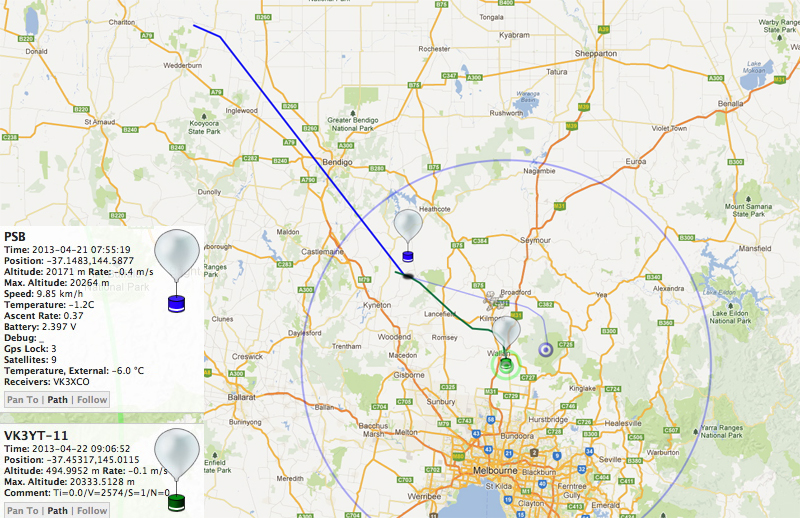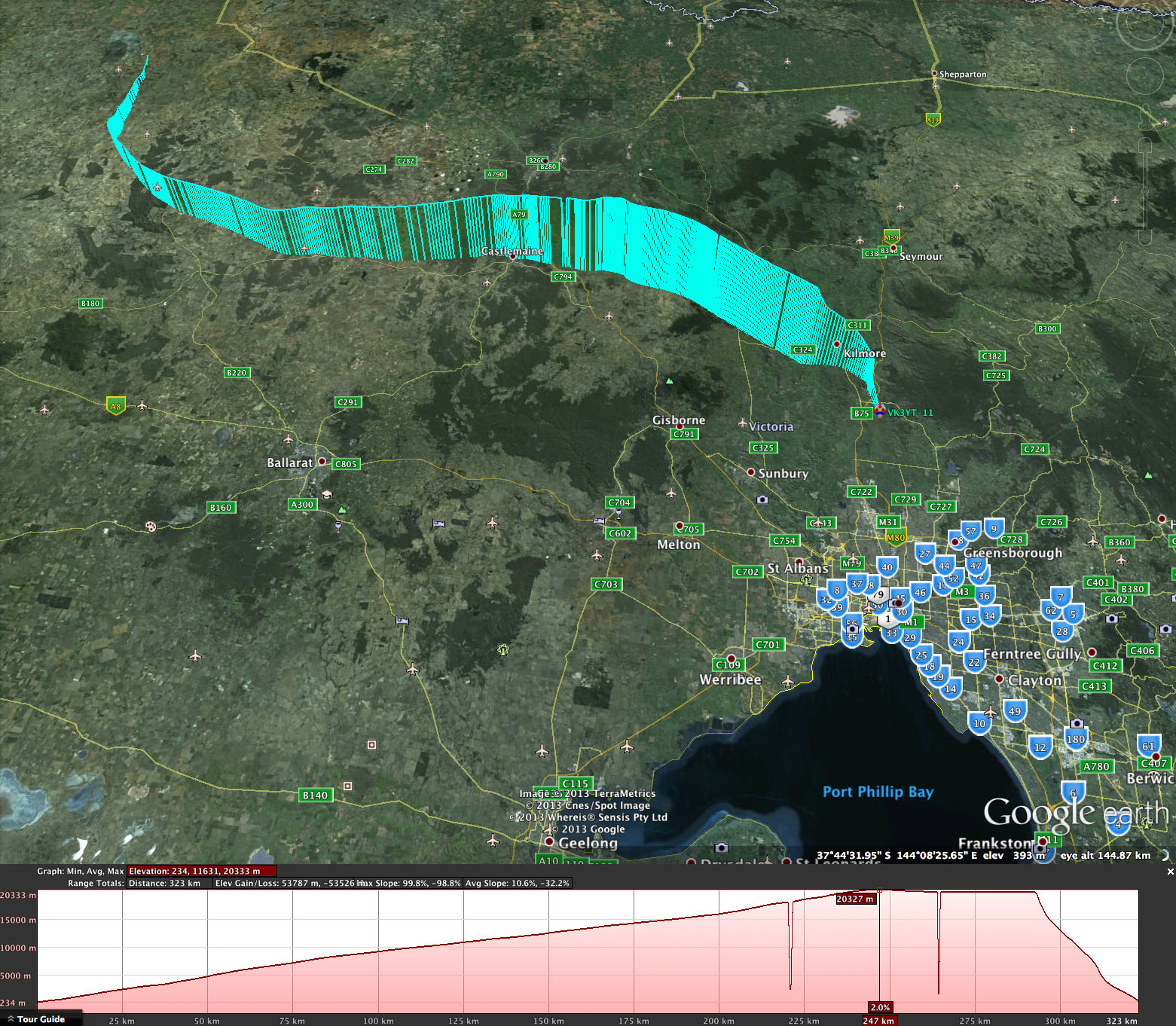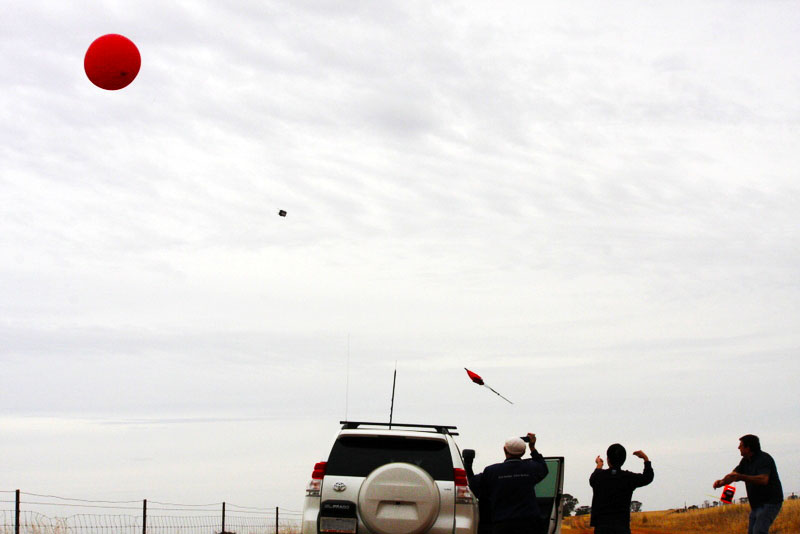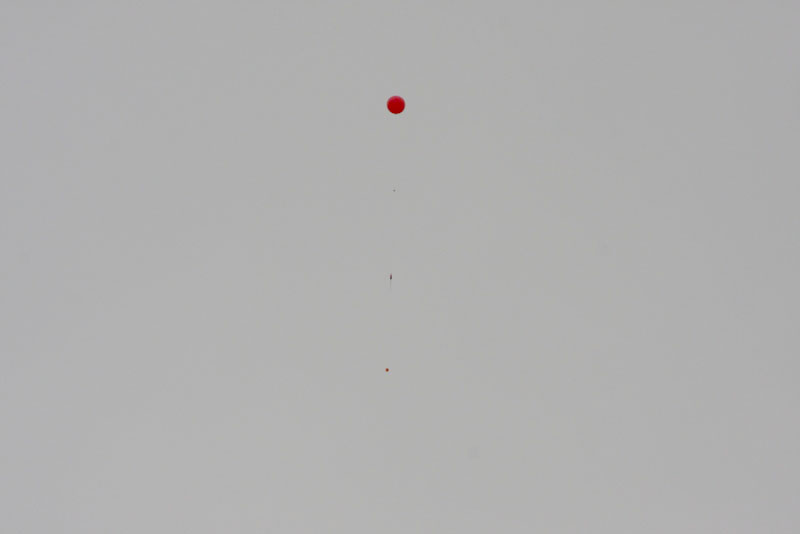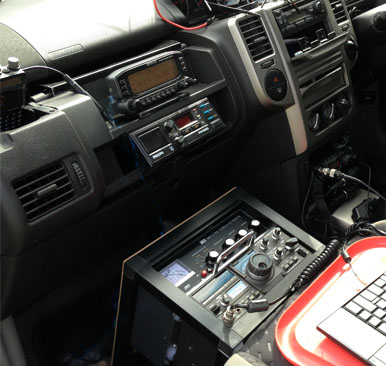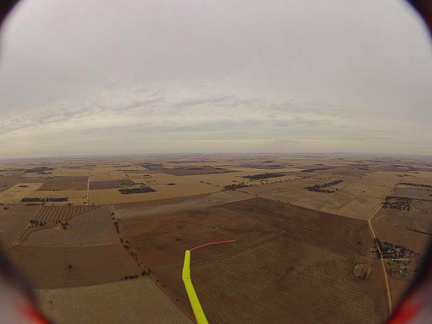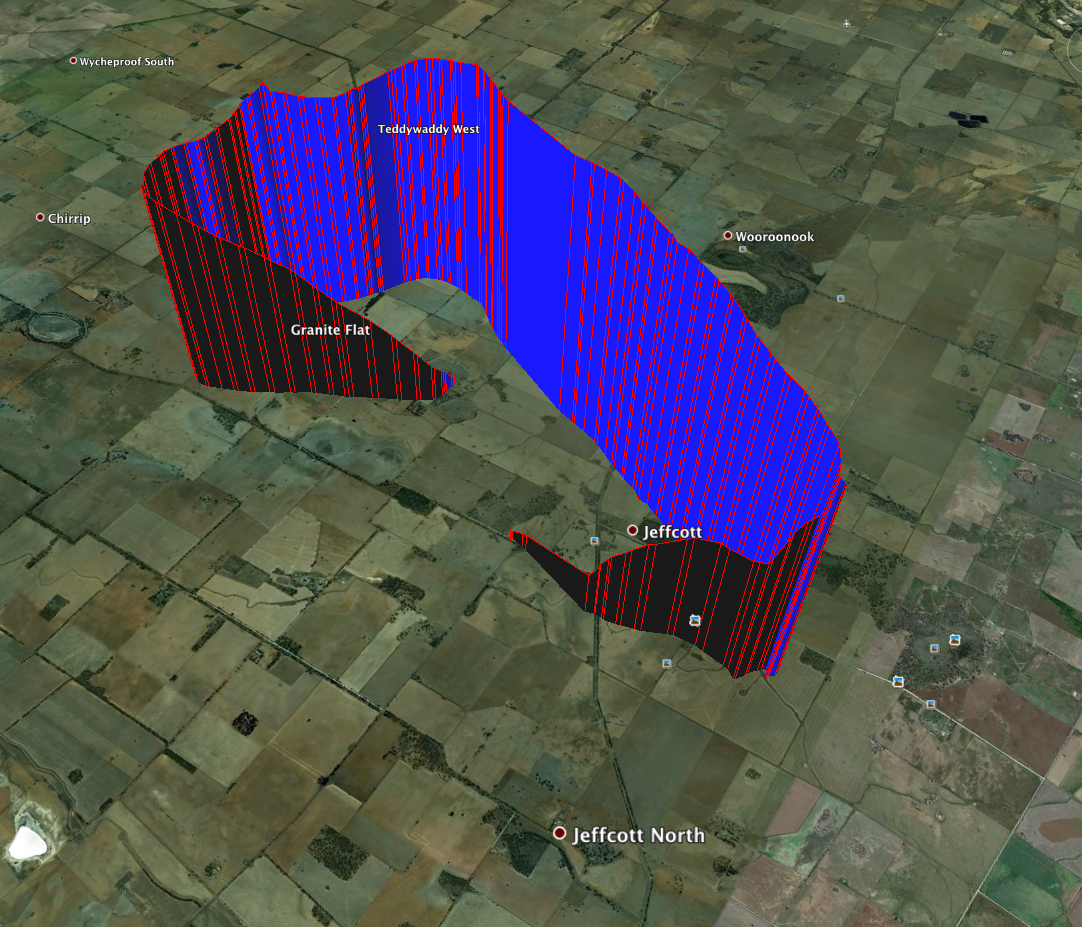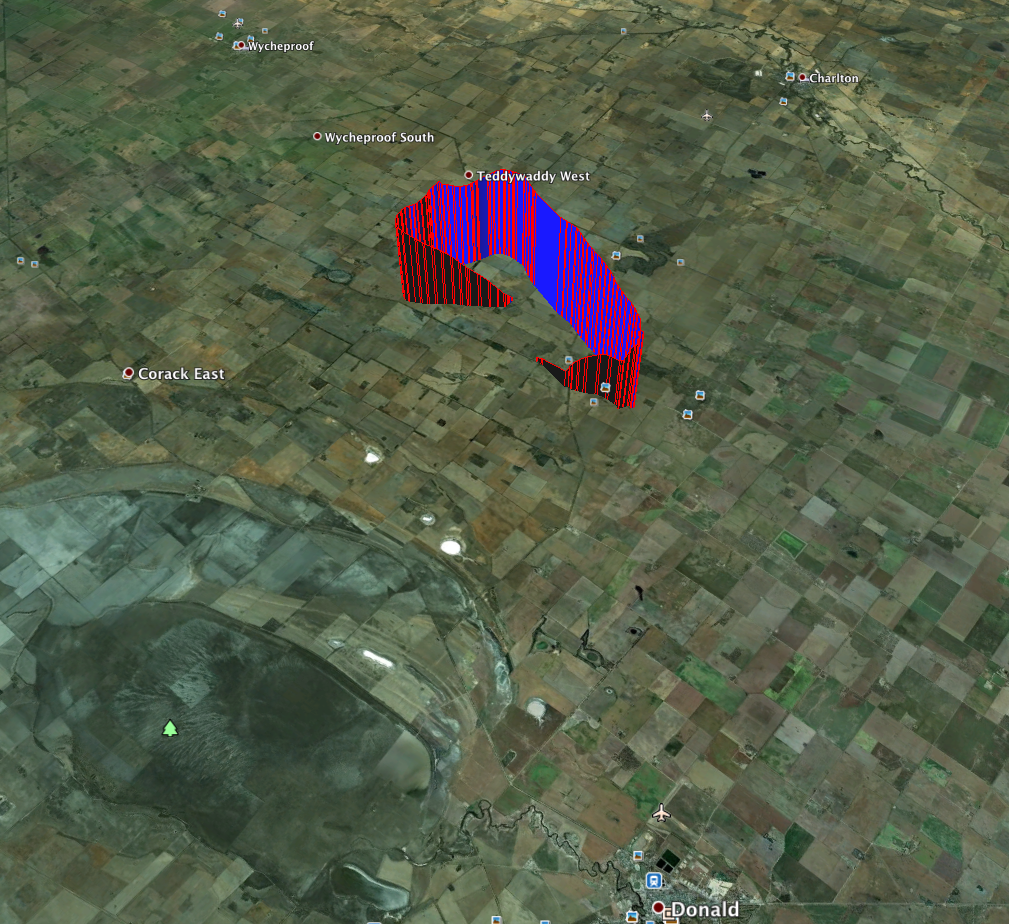6th July 2013
Flight Path of the 6th July release
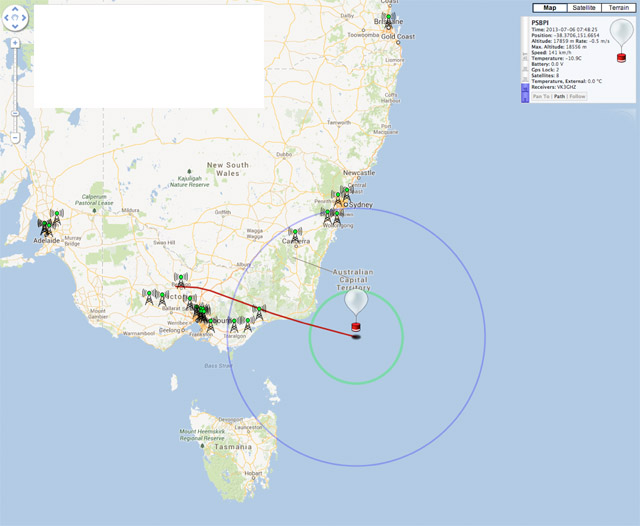
PSB – Flight Path
Max alt: 18556m
Distance travelled before losing contact: 690km, in 5h46m
Max ground speed >250km/h
Maximum number of tracking stations for one packet: 14
Furthest tracking station: Brisbane
Images captured by DI-Fldigi HAB
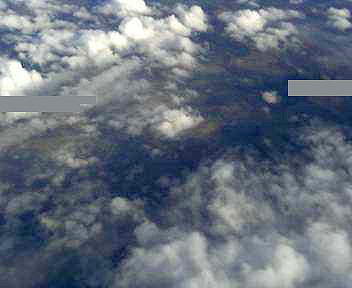
PSB Image 1
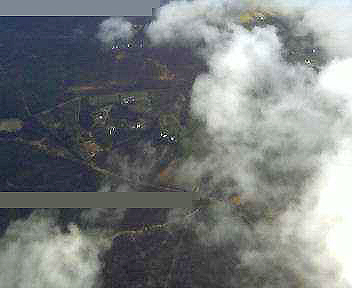
PSB Image 2
21st April 2013
Flight Path of the 21st of April release
- We selected north-west Victoria near Donald, for the release cause of it flat open fields and road access across vast areas of Victoria.
- The wind condition was very challenging, we lost 2 balloons before the third one can be launched successfully.
- The balloon travelled 220km back to Melbourne, leading a chase that lasted many hours. The landing zone was at Wallan.
- The balloon reached ground speed of over 80k/m, and just above 20km altitude. We cut it down at Lancefield
We finished the shift at 4am. It was freezing cold.
Things that went well:
- Hardware and software worked reasonably well. David’s code did a good job of feeding the map program with position data
- Balloon: floating at 20km at sunset, it would stay there over night if we didn’t cut it down.
- Cutdown: worked well
- APRS: gave the last positions.
View from the Payload as it lifts off
Flight profile.
323km is a pretty good distance for a little balloon.
Start 2013-04-21 04:37:25 UTC
Stop 2013-04-21 09:06:52 UTC
We hit 10 APRS digi-peaters in 5 states, VK1, VK2, VK3, VK5, VK7.
Here are direct LOS distances from the digipeaters to the APRS tracker when packets were received:
Not bad for 300mW on 2m
Lowest inside temp = -22.5 degree C
Lowest ouside temp= -35.5 degree C at 14km
Chase Cars
FT-817 also used for portable ground recover of payload using 70cm UHF Yargi antenna
Philips FM900 2nd 2 meter short range communication radio
10th March 2013
After months of Testing and building countless trials and error with ongoing re- testing and re- building we finally came up with a design and process that we felt confident in releasing a balloon with a payload then tracking its destiny while having constant communication with it during its flight and recovering the payload at the end, and we did!
This also was pretty much an intro flight for us providing a wealth of learning not just with the hardware and software but with the regulations and process required to do this type of activity. Our goal is to work our way up to be able to get a payload high enough to reach the edge of space and recover it. Out Team here at PSB are all dedicated in this project and all have levels of different expertise that come together in a device that is absolutely amazing when you think what it can do just powered by 1.5 Volts ( PICO module ) in this particular instance. we also have other device on the go that will be used in later balloon releases, to provide different functions and send telemetry
The heart of the system in March 10th Flight is the PICO tracker, later we will go into depth on how it works and how we managed to track the payload using RTTY (Amateur Radio Teletype)
Because of weight to lift limitation we did not include a camera in this payload, I guess the objective was to test our tracking equipment and software and to prove we have got that right before putting time, cost and effort into more advanced launches
Last Sunday March 10th with the approval from CASA (civil Aviation Safety Authority) we were given the OK to release a light balloon as defined in CASR 101.145.
The definition of a light balloon is one that it will not exceed two metres in diameter at any stage of its flight and will not carry more than 4 KG payload.
We selected north-west Victoria near Wycheproof, for the release cause of it flat open fields and road access across vast areas of Victoria.
As a matter of interest the payload came down to earth on its own and we did not have to deploy the cut down system, also the balloon did not burst. We believe the type of balloon we used may have expanded to a state where the Helium gas may have escaped via imperfection in the body of the balloon causing slight deflation to take place so the Balloon slowly came back to earth.
Below some stats
-The ambient temperature got to 46.2 degree - Payload maxed out at 53.2 degree, and lowest was 22.7 up the clouds. - Max altitude was 4255m ASL. - The balloon floated around a 6km area.

